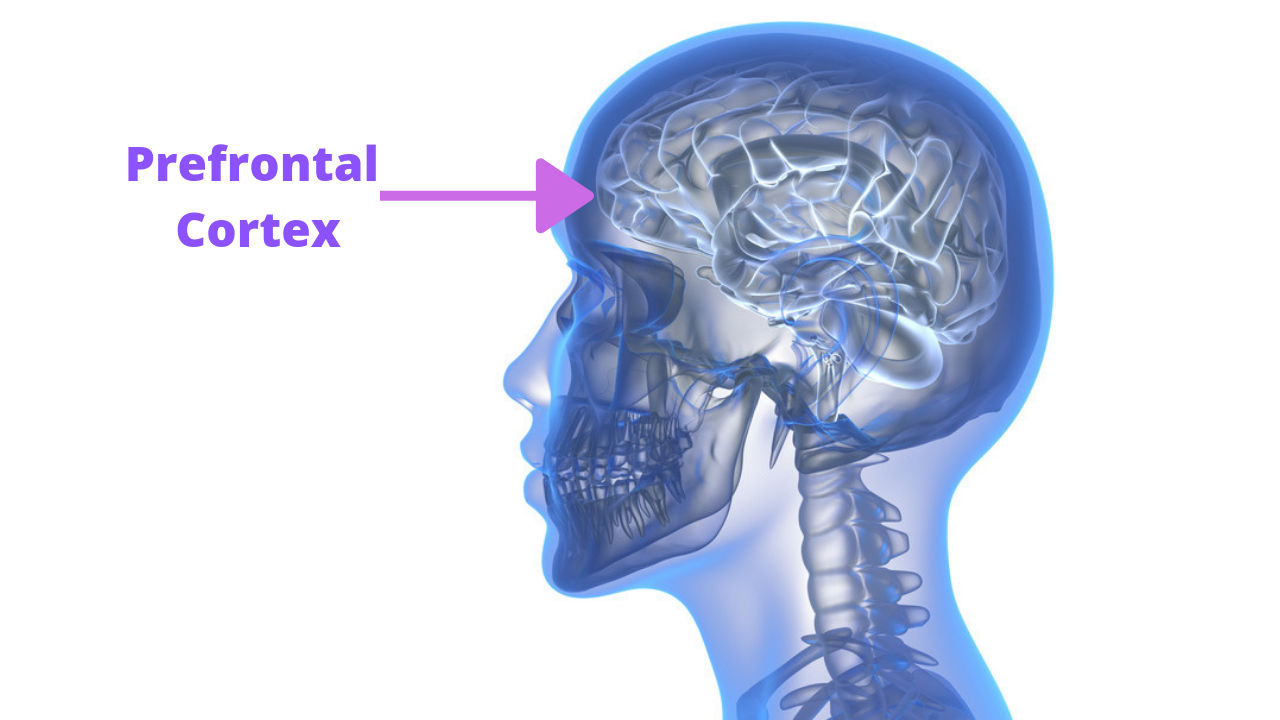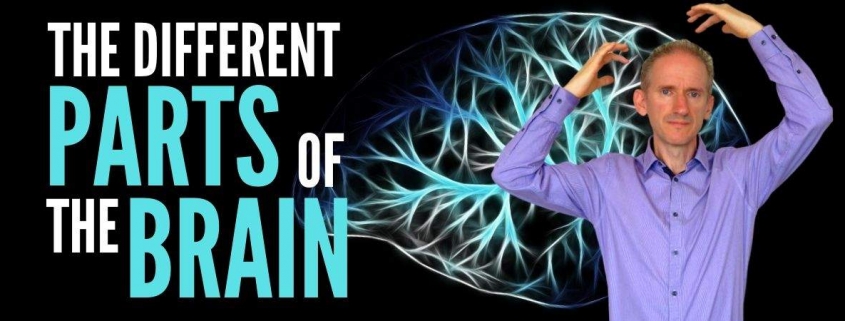The Parts of the Brain and their Functions
The human brain is fascinating in so many ways! It has lots of different parts. In this article, I focus on the ones that are most important from a psychological perspective.
You may have heard of terms such as prefrontal cortex, amygdala, hypothalamus or hippocampus before, but do you understand what these parts of the brain do?
In this article, I will cover 5 different parts of the brain in detail and explain how these different parts of your brain work together to keep you safe.
Knowing this information will help you understand why you sometimes act emotionally or instinctively. You’ll also discover why you forget things when you’re stressed or anxious.
Watch the Video Below:
Listen to the Podcast
It’s so important to understand how your brain works so that when you have an emotional experience or fear response, you know which area of the brain it stems from. When you forget something important, like your lines during a speech or presentation, you will begin to understand what is happening within your brain that causes this to happen. Knowing this gives you more choices and helps you find better ways to control your brain.
So, I’ll now cover the different parts of the brain that affect your mindset, emotions, and psychology.
The Prefrontal Cortex
The Prefrontal Cortex is the very front part of the brain, located just behind your eyes and forehead. When we think or become aware of our thoughts, it feels like they come from this area. It’s the part of the brain that is often described as the “conscious mind”
The Prefrontal Cortex is part of the Frontal Lobe, which is the larger front part of your brain. Together, they are part of the Neocortex, which is the whole of the top part of your brain.

Prefrontal Cortex functions
The Prefrontal Cortex is responsible for thinking, goal-setting, and prediction of outcomes. It helps us work out what we want to achieve. It’s used to plan our time, our life and how we organize things. It also determines what is good and bad or right and wrong, based on our beliefs. It helps us to evaluate options and make decisions and predicts the future consequences of our actions and how they affect other people and our life. The ability to make decisions is a key function of the Prefrontal Cortex.
The Prefrontal Cortex also controls personality expression and how we act in public by moderating social behavior. It allows us to suppress emotional urges and unhelpful thoughts to better fit in during social situations. This is why your behavior often changes when you are interacting with others.
Limbic System
The Limbic System is the center for emotional responsiveness. It is where motivation and memory formation happen. It also houses the mechanisms that keep us safe. These include things like sensory perception, time perception, attention span, and consciousness.
The main parts of the Limbic System are the Amygdala, Hippocampus, and Hypothalamus. These areas are all very closely connected to the Prefrontal Cortex and carry out functions simultaneously.
Practicing meditation and mindfulness helps to strengthen the connections (or neuropathways) between the Prefrontal Cortex and the Limbic System. So there is real scientific evidence as to why meditation and mindfulness are so good for you!

The Amygdala
The Amygdala is the emotional processing part of your brain. It receives incoming sensory inputs and provides an emotional response. It’s the early warning system for either perceived or actual threats and is a much more unconscious part of your brain.
The left side of the Amygdala deals with both positive and negative emotional responses. The right side deals mainly with negative emotional responses.
Amygdala functions
One of its most fundamental roles is directing your attention and focus to the most important sensory-stimuli, whether it is good or bad. Other unnecessary surrounding stimuli is blocked out and ignored.
This explains why you can be extremely focused on one specific person or thing, such as when in love or extremely engaged in a conversation.
When experiencing fear, your Amygdala will focus your attention on either dealing with or getting away from the threat. It activates the stress response so that you respond effectively to dangerous stimuli.
The Amygdala also evaluates facial expressions and sends this information to the Prefrontal Cortex. When you notice someone smiling at you, the Amygdala picks that up first and then triggers thoughts about that person.
Another useful function of the Amygdala is the release of hormones that can alter the cognitive processing of the Prefrontal Cortex. When under stress, blood flows away from the Prefrontal Cortex into the more emotional parts of your brain and body. Less blood in the Prefrontal Cortex is the main reason why you forget an important phrase in a speech when you’re feeling stressed. These hormones also activate the body via the Hypothalamus, which we will discuss further later in this article.
Fight, flight or freeze
The Amygdala is especially activated by surprising, ambiguous or uncertain situations. When these situations occur, it accesses memories from past experiences (and your beliefs behind these) to determine whether the incoming sensory input is a stressor or not. If it is, it will then activate an emotional response. This is typically known as the “fight, flight or freeze” response. You either attack the threat head-on (fight), run away (flight) or stand still in shock (freeze).
In a fight, flight or freeze response, the Amygdala hijacks the Prefrontal Cortex, by taking blood away from the Prefrontal Cortex and redistributing it to the Limbic System. It also activates your instinctive survival responses without you having to think about them.
The Amygdala processes information milliseconds earlier than the Prefrontal Cortex. So if a memory matches an incoming stimulus, it will act automatically and instinctively without involving the Prefrontal Cortex. If it is a new experience, the Amygdala will look to the Prefrontal Cortex for direction.
Depression and the Amygdala
Depression is linked to an enlarged Amygdala. The more frequently the Amygdala is activated, the larger it becomes. As the Amygdala gets larger over time, it increases the symptoms of depression. By examining the Amygdala and other areas of the brain, depression can now be measured scientifically.
The Hippocampus
The Hippocampus is responsible for the formation of memories. It creates structured interactions between the Hippocampus and the Prefrontal Cortex, which happens during slow brain wave sleep. This is part of the process of consolidating long-term memories while we sleep. This is one of the reasons that we have dreams.
You can think of the Hippocampus as like your brain’s Google search engine. It allows fast and efficient memory searching from the Prefrontal Cortex and other parts of the Neocortex to help assess and plan. This is important for learning, especially for physical tasks. The Hippocampus tracks your conscious steps so over time they become unconscious or second-nature.
Chronic stress negatively affects the Hippocampus. Depression can reduce the volume of the Hippocampus by between 8% and 19% as well as enlarging the Amygdala as mentioned earlier.
So the consistent thoughts and feelings that you have can cause real physical changes in your brain.
The Thalamus
The Thalamus is the central hub of your brain. It receives outside information from your senses and forwards that to other areas of your brain like the Amygdala and Prefrontal Cortex. It also helps to manage motor and cognitive functions.
The Hypothalamus
The Hypothalamus takes input from your senses via the Thalamus. It is closely connected to both the Amygdala and Hippocampus and helps control and monitor numerous vital processes.
These include your metabolism (how quickly you digest food), your circadian rhythms (what makes you feel sleepy or wide-awake) and the quality of sleep, especially the amount of deep sleep.
Your Hypothalamus also controls your body temperature and lets you know when you’re thirsty or hungry. These are a bit more unconscious and influence your body more than your mind. However, the Hypothalamus also takes psychological input from what you perceive through your senses.
Final Thoughts
The parts of the brain that control our psychology, mindset, and emotions are fascinating to learn and very useful in understanding how and why you think, feel and behave in certain ways. With this greater understanding, you will be able to tackle issues in your daily life with more clarity and focus.
Thank you for reading this article. If you enjoyed it and found it useful, then please share it with other people, or on social media.
Hope you are having a wonderful day!
Paul





